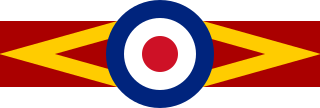 W
WNo. 80 Squadron RAF was a Royal Flying Corps and Royal Air Force squadron active from 1917 until 1969. It was operative during both World War I and World War II.
 W
WThe Royal Hong Kong Auxiliary Air Force (RHKAAF) was an auxiliary unit of the United Kingdom Royal Air Force, based in Hong Kong. It was formed in 1949 as part of the Hong Kong Defence Force. In preparation for the transfer of sovereignty from the United Kingdom to the People's Republic of China, the unit was disbanded on 31 March 1993.
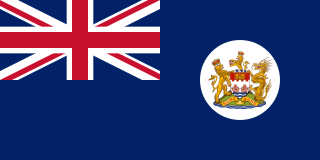 W
WBritish Forces Overseas Hong Kong comprised the elements of the British Army, Royal Navy and Royal Air Force stationed in British Hong Kong. The Governor of Hong Kong also assumed the position of the Commander-in-chief of the forces and the Commander British Forces in Hong Kong took charge of the daily deployment of the troops. Much of the British military left prior to the handover of Hong Kong to China in 1997. The present article focuses mainly on the British garrison in Hong Kong in the post Second World War era. For more information concerning the British garrison during the Second World War see the Battle of Hong Kong.
 W
WThe British Military Hospital was a hospital in Hong Kong for the use of the British garrison. It was located at 10-12 Borrett Road from 1907 to 1967. It was built between 1903 and 1906, and officially opened on 1 July 1907.
 W
W"C" Force was the Canadian military contingent involved in the Battle of Hong Kong, in December 1941. Members of the force were the first Canadian soldiers to see action in World War II. The major Canadian units involved in the defence of Hong Kong were the Winnipeg Grenadiers and the Royal Rifles of Canada. In addition to this the Canadians provided a Brigade HQ.
 W
WThe Central Ordnance Munitions Depot was constructed in the late 1930s by British for the World War II to combat the Japanese Invasion as well as to store arms and ammunition for the defence of Hong Kong. The British used "Little Hong Kong", name for the fishing village town of Aberdeen, as a "code name" to refer to the military site and therefore confuse Japanese spies in the local community before the Japanese invasion.
 W
WThe Gin Drinkers Line, or Gin Drinkers' Line, was a British military defensive line against the Japanese invasion of Hong Kong during the Battle of Hong Kong in December 1941, part of the Pacific War.
 W
WGun Club Hill Barracks are barracks in King's Park, or in Jordan, Hong Kong formerly used by British Army garrisons during British colonial rule. The military began using the area shortly after 1860 when the British acquired Kowloon. The barracks are bounded by Austin Road, Jordan Path, Gascoigne Road and Chatham Road South.
 W
WThe Hong Kong Air Cadet Corps is a voluntary uniformed group subsidised by the Home Affairs Bureau of the Hong Kong government and is registered under the Societies Ordinance as a non-profit making charitable organisation.
 W
WThe British colony of Hong Kong saw no military action during World War I (1914–1918). The biggest external threat to the colony was perceived to be the German East Asia Squadron, but the squadron was eliminated in December 1914. Nonetheless, the city served as an important port in East Asia, including as the headquarters of the British China Station, and saw significant socioeconomical changes during the war.
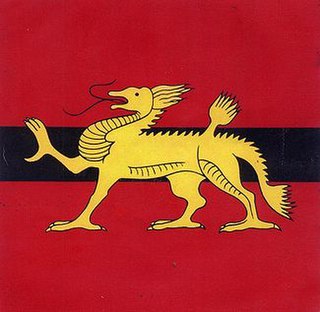 W
WThe Hong Kong Military Service Corps (HKMSC) was a British army unit and part of the British garrison in Hong Kong. Throughout the history of Hong Kong, it has been the only regular British army unit raised in the territory made up almost entirely of Locally Enlisted Personnel (LEP).
 W
WThe Hong Kong Museum of Coastal Defence is a museum in Hong Kong, located in a former coastal defence fort overlooking the Lei Yue Mun channel, near Shau Kei Wan on Hong Kong Island. The fort was built by the British in 1887, intended to defend the eastern approaches to Victoria Harbour.
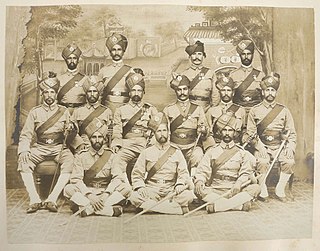 W
WThe Hong Kong Regiment was a British Indian Army regiment seconded to the British Army intended to form part of the garrison of British Hong Kong between 1891 and 1902. It was disbanded in 1902 following a request from the India Office owing to the cost of the regiment.
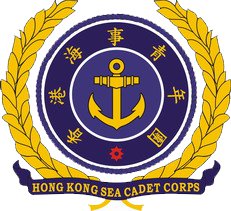 W
WHong Kong Sea Cadet Corps is a youth organization based in Hong Kong and formed in 1968 by former Royal Naval Reserve officers by the creation of Hong Kong Law
 W
WKowloon East Barracks, formerly Osborn Barracks, is a People's Liberation Army facility, and was a British Army facility, in Kowloon City District, Hong Kong. Located in the northern part of Kowloon on Waterloo Road and Junction Road (across the street from Hong Kong Baptist University.
 W
WThe Hong Kong Museum of Coastal Defence is a museum in Hong Kong, located in a former coastal defence fort overlooking the Lei Yue Mun channel, near Shau Kei Wan on Hong Kong Island. The fort was built by the British in 1887, intended to defend the eastern approaches to Victoria Harbour.
 W
WLei Yue Mun Park and Holiday Village is a holiday village located in the east of Shau Kei Wan, facing Lei Yue Mun, with an area of 22.97 hectares. It used to be Lyemun Barracks, barracks for the British soldiers stationed in Hong Kong prior to its conversion into a holiday village, the only holiday camp owned by the government in the urban districts of Hong Kong.
 W
WLei Yue Mun Park and Holiday Village is a holiday village located in the east of Shau Kei Wan, facing Lei Yue Mun, with an area of 22.97 hectares. It used to be Lyemun Barracks, barracks for the British soldiers stationed in Hong Kong prior to its conversion into a holiday village, the only holiday camp owned by the government in the urban districts of Hong Kong.
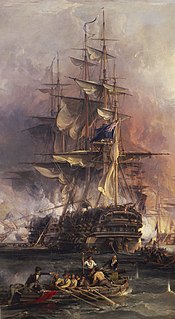 W
WHMS Minden was a Royal Navy 74-gun Ganges-class third-rate ship of the line, launched on 19 June 1810 from Bombay, India. She was named after the German town Minden and the Battle of Minden of 1759, a decisive victory of British and Prussian forces over France in the Seven Years' War. The town is about 75 km away from Hanover, from where the House of Hanover comes—the dynasty which ruled the United Kingdom from 1714 until 1901.
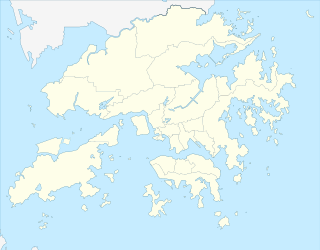 W
WMurray Barracks was a barracks for the British Army garrisoned in Admiralty, Central in Hong Kong. It was named after Sir George Murray, the Master-General of the Ordnance at the time of construction.
 W
WMurray Battery was an artillery battery located on Battery Path, beneath Government Hill in Central, Hong Kong. Named after Sir George Murray, it was built in 1841, shortly after the British took possession of Hong Kong, and served to protect the colonial government's headquarters. It was demolished in the 1950s and replaced with the Former Central Government Offices.
 W
WNumber 22 Squadron of the Royal Air Force is an operational testing and evaluation squadron for all the Joint Helicopter Command helicopter types including Chinook, Puma HC2, Merlin HC4, Apache and Wildcat AH1. Formerly the Rotary Wing Operational Evaluation and Training Unit, the highly experienced helicopter aircrew will also ensure frontline crews have Qualified Warfare Instructors to support them on operations worldwide. The squadron was reformed in May 2020 to serve as the Joint Helicopter Command Operational Evaluation Unit.
 W
WNo. 28 Squadron of the Royal Air Force operates the Puma and Chinook helicopters from RAF Benson.
Number 45 Squadron is a flying squadron of the Royal Air Force. The squadron, which was established on 1 March 1916 as part of the Royal Flying Corps, currently provides flying training using Embraer Phenom T1s and operates under the command of No. 3 Flying Training School at RAF Cranwell, Lincolnshire.
 W
WNo. 60 Squadron of the Royal Air Force was formed in 1916 at Gosport. It is currently part of No. 1 Flying Training School based at RAF Shawbury in Shropshire flying the Airbus H135 Juno HT1.
 W
WNo. 205 Squadron was a Royal Air Force unit formed on 1 April 1918. Prior to this it had existed as No. 5 Squadron of the Royal Naval Air Service (RNAS). In 1929, it became the first RAF squadron to be permanently based in Singapore, taking as its motto Pertama di Malaya. No. 205 Squadron operated during World War II and the Cold War before disbanding on 31 October 1971.
 W
WNumber 209 Squadron of the British Royal Air Force was originally formed from a nucleus of "Naval Eight" on 1 February 1917 at Saint-Pol-sur-Mer, France, as No. 9 Squadron Royal Naval Air Service (RNAS) and saw active service in both World Wars, the Korean War and in Malaya. The use of the squadron number ceased in 1968 and it has not been reused since by an RAF squadron. However the number, badge and motto is in current service within the RAF Air Cadets at 209 Squadron ATC in Nottinghamshire.
 W
WPerowne Barracks is a former British Army barracks in Hong Kong. The barracks are no longer in military use.
 W
WThe Chinese People's Liberation Army Forces Hong Kong Building is a 113-metre (371 ft) tall, 28-floor building located within the former HMS Tamar naval base on Lung Wui Road, Admiralty, Hong Kong. It serves as the headquarters of the People's Liberation Army Hong Kong Garrison. The building is still popularly known by its old name as the Prince of Wales Building and is located adjacent to Tamar.
 W
WRAF Kai Tak was a Royal Air Force station in Hong Kong, based at Kai Tak Airport. It was opened in 1927 and used for seaplanes. The RAF flight operated a few land based aircraft as well as having spare aircraft for naval units.
 W
WRAF Little Sai Wan was a signals intelligence station in the Siu Sai Wan area of Hong Kong.
 W
WThe Shek Kong Airfield, formerly Royal Air Force Station Sek Kong or Sek Kong Airfield, is an airfield (airbase) located in Shek Kong, New Territories, Hong Kong.
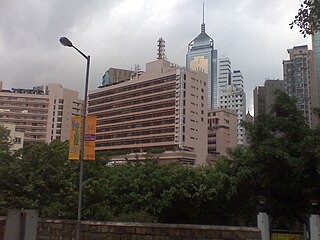 W
WRuttonjee Hospital is a hospital in Wan Chai on Hong Kong Island in Hong Kong. It is affiliated with the Li Ka Shing Faculty of Medicine, at the University of Hong Kong, and provides clinical attachment opportunities for the university's medical students.
 W
WSeamen's Hospital was originally opened by Dr Peter Young, a surgeon of the Honourable East India Company in 1843 during the First Opium War.
 W
WSha Tin Airfield was a small military airfield in Sha Tin, New Territories, Hong Kong, which had a single concrete runway. The airfield was located along the Shing Mun River and looked out to Tide Cove. The airfield served as a Flight location for most of the location's existence.
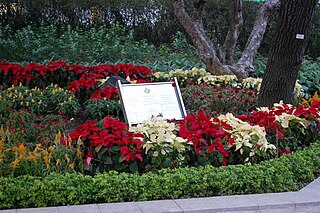 W
WSham Shui Po Barracks was a British Army facility built in the 1920s in the Sham Shui Po area of Kowloon, Hong Kong. The base was bounded by Fuk Wa Street to the east by Yen Chow Street and to the west by Tonkin Street and Camp Street.
 W
WStanley Fort is a military installation on the south side of Hong Kong Island. Built originally to serve the British Armed Forces, it now houses the Hong Kong garrison of the Chinese People's Liberation Army Ground Force. It has also been used as Kai Chi Children's Centre and the Aberdeen Rehabilitation Centre.
 W
WHMS Tamar was the name for the British Royal Navy's base in Hong Kong from 1897 to 1997. It took its name from HMS Tamar, a ship that was used as the base until replaced by buildings ashore.
 W
WThe Victoria Barracks were a barracks in the Admiralty area of Central on Hong Kong Island, Hong Kong. The barracks were constructed between the 1840s and 1874, and situated within the area bounded by Cotton Tree Drive, Kennedy Road and Queensway. Together with Murray Barracks, Wellington Barracks and Admiralty Dock, the barracks formed a British military zone in Central. The barracks was named for Queen Victoria, monarch at the time of construction.
 W
WWellington Barracks was a military barracks located to the east of Garden Road in Admiralty, Hong Kong. One of many military complexes constructed by the British Army in the area, the land was returned to the Hong Kong government in the 1970s and gradually reverted to civilian use. As a result, the barracks was closed at the end of that decade, demolished in the mid-1980s and replaced with Harcourt Garden.
 W
WWhitfield Barracks were barracks in Tsim Sha Tsui, Kowloon, Hong Kong. It was named after Henry Wase Whitfield, who was appointed commander of the British Army in Hong Kong in 1869. The area is now the site of Kowloon Park, where four reconverted barrack blocks and parts of the former Kowloon West II Battery remain.